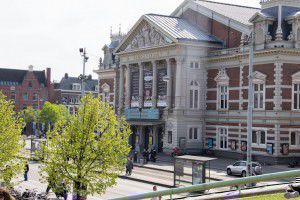Goal! around the world [Infographic]
Sometimes one word is all you need… With the World Cup getting underway today, here’s how each national team says that all-important word, ‘goal’.
You can find this and lots more in our language learning app, uTalk – available to download and start learning right now from the App Store. So whether you’re watching the football at home or away, you’ll always be prepared.
(There are lots of non-football related words in there too, for those of us with other interests!)
Please do share the infographic with friends and tell us how you’ll be shouting ‘Goal!’ this World Cup 🙂
Embed This Image On Your Site (copy code below):
Will online translators make language learning redundant?
Microsoft have just unveiled the latest version of their Skype Translator, which will enable us to chat with people all over the world even if we don’t speak their language. This story ran in the Daily Mail here in the UK yesterday, under the rather depressing headline, ‘Don’t bother learning a foreign language! Skype will soon translate spoken foreign words in real time’.
I can definitely see that this innovation has its uses, particularly if you need to speak to a client or colleague in another country, and don’t have time to learn their language. And I’m in no way trying to undermine all the years of research that have gone into its development – it looks incredibly clever and impressive. But I think it’s unrealistic to believe that it’s going to make language learning redundant.
For one thing, I haven’t had a lot of faith in translation software since the time I needed to write an email to a colleague in Dutch. Since the only Dutch I know is ‘waar is de winkel?’ (‘where is the shop?’) and ‘de tweemansbob’ (‘two-man bobsleigh’), naturally I turned to Google Translate, copied and pasted the offered translation and sent the email, feeling pretty proud of myself. Until my colleague replied, telling me – in English – to never use Google Translate for Dutch again, because what I’d sent him made no sense at all. Hard to tell by email, of course, but I always picture him wiping away tears of laughter as he wrote his reply.
This was a few years ago, and I realise things have come on a bit since then. But these days if I have to use an online translation tool, I’ll always copy the text back in and check it makes sense in English before I hit send. And even then I’m never completely convinced I haven’t made some horrible mistake. As with any translator, if you don’t know the language at all, you have to put complete faith in the intermediary to correctly translate what you’ve said. With people, you can generally tell if they know what they’re talking about. With computers, it’s not so easy – especially given that this particular innovation also relies on speech recognition technology to even decide what needs translating in the first place.
I’m no expert but I’d assume most people with a need for the Skype Translator will be those needing it for business calls, and in that case you definitely need to know your translator is 100% reliable, or who knows what you could end up agreeing to? Presumably those who call friends or family through Skype will already know at least a little of the other person’s language – unless they’re calling their in-laws, in which case it’s possibly even more important to avoid embarrassing translation mistakes.
Secondly, even if I were completely confident that the translator was accurate, I’m not sure I’d want to use it. The brilliant thing about video call software like Skype is that it allows you to talk face-to-face with someone on the other side of the world, where before they would have been a disembodied voice on the phone or, even more impersonal, a written letter or email. Microsoft describes the translator as ‘human to human interaction’ but it’s not really – it’s ‘human to computer to human’, and what you hear is not your friend or colleague but a computer-generated voice giving you the translation of what they’re saying.
Personally, I’d rather do a bit of preparation, then fumble my way through a conversation, probably in a mix of languages and littered with mistakes, than have to sit and wait for a program to decide what it thinks I said and pass it on. Not only that, but making the effort to learn at least a little of the other person’s language shows respect for them and their culture. It’s well known that speakers of other languages would much rather you try, and get it wrong, than sit back and let a computer do all the work.
Finally, as we all know, there are no end of benefits to learning a language, far beyond making it through one Skype call. We’ve covered all these benefits elsewhere, so I won’t go into them all again. And in fairness, I don’t think Microsoft are trying to replace language learning. But I can’t agree with the Daily Mail‘s headline – just because a machine exists that can help us out in a tight spot, it doesn’t mean we should never make the effort to learn a language again. Language learning is as important as it’s ever been, if only to avoid an embarrassing situation like this, when we’re forced to leave the computer behind…
(Apologies in advance to any Italian speakers!)
Liz
10 reasons to visit… Amsterdam
As part of our non-stop quest to bring you an insiders’ guide to the cultural and linguistic highlights of Europe and beyond, here are my top ten reasons why you should visit Amsterdam.
1. The beautiful canals
Of course I knew that Amsterdam was famous for its canals, but I didn’t realise that they’re everywhere. This can make getting around a little confusing as everything sort of looks the same (especially if you indulge in some of Amsterdam’s other famous pastimes – see later!) but it gives the city a unique and beautiful atmosphere, and means you’re never short of somewhere relaxing to sit and enjoy a rest and a beer. Nat suggests renting a pedalo, or you can also take a cruise around the canals for about 15 euro.
2. The Red Light District
This is one of Amsterdam’s most famous and most unique tourist sites. Whatever your opinion is on women being displayed for sale in windows, it’s something you won’t see anywhere else, and the district is definitely worth a peek. Just remember – pictures are strictly forbidden, and your camera will be confiscated if you don’t keep it stowed away.
3. The coffeeshops
If you don’t know what Amsterdam’s coffeeshops are known for, then let me give you a hint… it’s not coffee! Since marijuana is legal in Holland, many tourists flock to Amsterdam to smoke a joint or two in one of the city’s many coffeeshops. These are literally everywhere, especially in the city centre and near to the Red Light District, and are always packed with people sitting outside and enjoying a smoke. You’ll probably notice the distinctive smell everywhere. By the way, there are also plenty of great places to drink actual coffee as well!
4. Dam square
There are a couple of main squares in Amsterdam, which are all packed with cafes, restaurants and bars, but Dam is the biggest and most iconic. During our trip there was a funfair going on there, and it’s definitely one of the more lively parts of the city, packed with people. By night, all the restaurants and bars around this area are busy, and sitting outside is a great way to people-watch and experience the Amsterdam nightlife. Be sure to also check out Rembrandtplein – where you can easily grab a table outside to eat dinner or have a drink, and Museumplein, where all the biggest museums (and the famous Amsterdam sign) are.
5. Dutch cuisine?!
If you’re anything like me, then you probably don’t instantly associate the Netherlands with great cuisine, but actually you’d be wrong! Amsterdam has plenty of good international restaurants, but is particularly good for Indonesian cuisine due to the country’s links with its former colony. We also found a fantastic Dutch restaurant in the centre, where I tried the traditional dish Hotchpotch, which is basically a combination of mashed potato and vegetables, served with bacon or meatballs, which was really tasty and filling. Make sure you also order a pint of Heineken (brewed in the city) and try some traditional apple cake or poffertjes (small pancakes), which are really popular.
6. Haring (herrings)
Technically this should probably come under ‘Dutch cuisine’, but I think it deserves a point all of its own. Herring is a very traditional food in the Netherlands, as in much of Northern Europe and can be bought from various stalls in the city. Try it with pickles and chopped onion in a roll for a tasty, cheap and portable lunch while you’re sightseeing!
7. Try out a few phrases in Dutch!
The stereotype that Dutch people are ridiculously good at English is true, so don’t worry if you don’t speak any Dutch; you can definitely get around and order food in English. However, people are generally friendly and happy to let you try out a couple of phrases on them. We got chatting to some locals in a club, and they were happy to teach us some basic words, although their English was completely fluent. Dutch people seem to be very open to chatting with foreigners in English (more so than elsewhere) and it’s an easy place to make some new friends.
Don’t forget to bring uTalk with you, even if you only use it to decipher what’s on menus!
8. The museums
There’s plenty to check out on the cultural side too. The Van Gogh museum has permanent queues in front of it, to see some beautiful paintings by the most famous Dutch artist of all time – even if he wasn’t well known at all in his lifetime. We visited the Rijksmuseum nearby, which has some paintings by Van Gogh and fellow Dutch artist Rembrandt, as well as many other exhibits. However make sure you leave plenty of time to see everything – as it’s huge and takes at least 3-4 hours to explore everything. Michal recommends the children’s science museum, and the Museum of Sex also sounds intriguing…
9. Parks
Well, this one is rather weather-dependent, but the weather was great over the Easter weekend, and a stroll around one of the parks was definitely in order. The Vondelpark is quite central and really big – great for a run or a walk. We also sunbathed for a few hours in the Osterpark (a bit further out) where you can easily while away a sunny afternoon.
10. Bikes, bikes, bikes!
Finally, the other big thing the city is famous for: bikes. The first thing everyone said to me before I went to Amsterdam was ‘watch out for the bikes’ and they weren’t wrong. It seems like absolutely everyone cycles everywhere, which means it’s a very clean city and the air quality is good. It’s also a very healthy way to get around. Renting a bike is an ideal way to see the city. You can walk just about anywhere, or there are trams and even a (small) metro network, but cycling is probably the quickest and easiest way to zip around the main sights and get from one side of the city to the other. Even cycling home from a night out seems to be the norm.
So there you have it… Everyone in the office seems to have a lot of opinions on what the best things to see and do are, so let us know what we’ve missed in the comments!
Alex (and team!)




